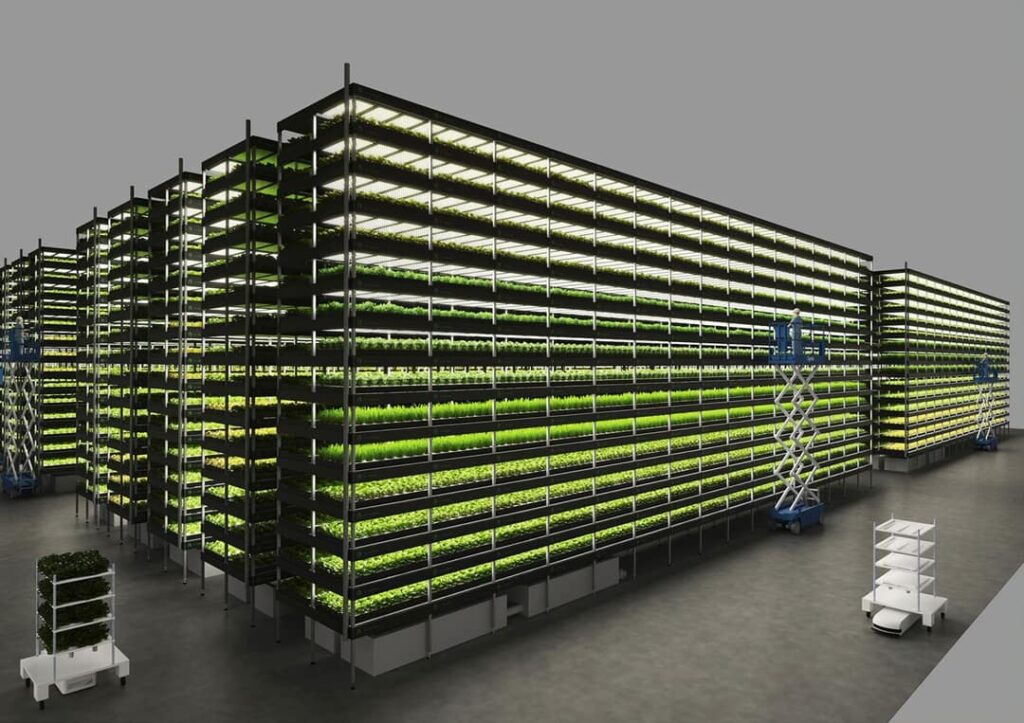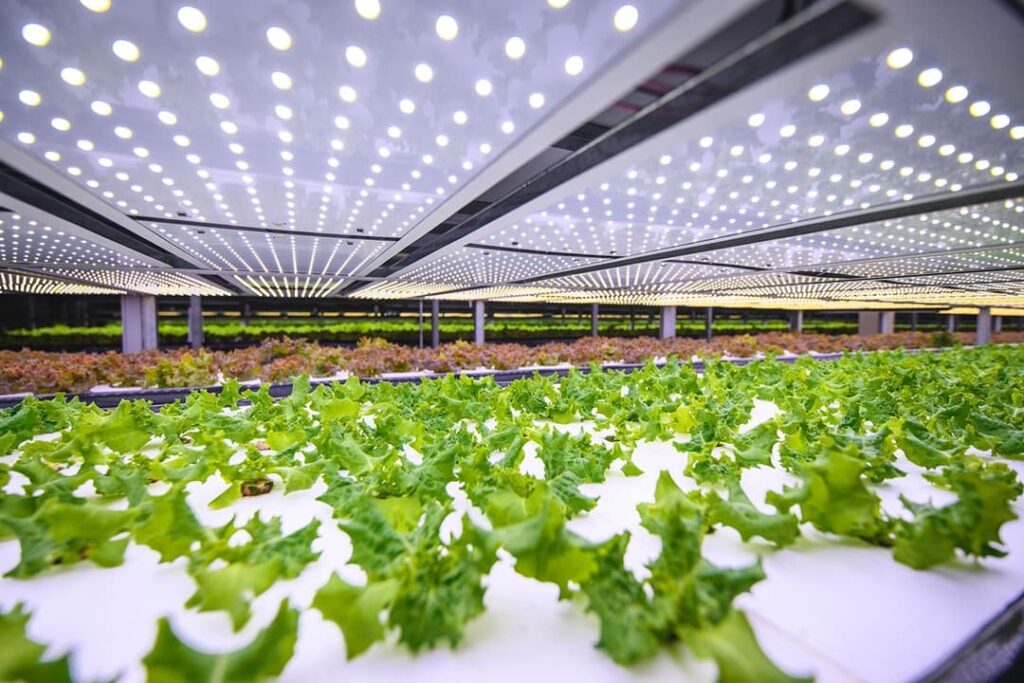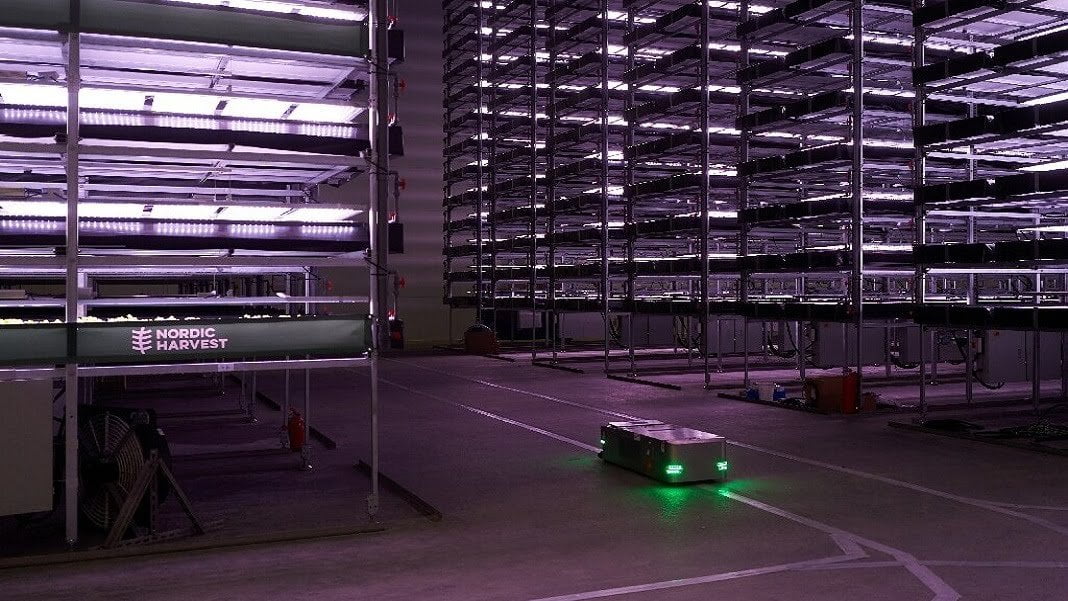from cultured meat to plant-based foods through robotic assistants in the kitchen. Technology is entering every corner of our food system - I think it's a good thing, because we absolutely need ways to produce more food of better quality, and using fewer resources.
One rapidly spreading technology that is doing just that is vertical farming. The vertical farm uses LED lights and a highly controlled indoor environment to grow produce with significantly less water, space or fertilizer than traditional farming.
There are vertical farms all over the world, from Singapore to the United Kingdom to the United States. And this week, the first phase of construction was completed on what will be a major addition to the sector.
The largest vertical farm in Europe

The new facility is located in Denmark, in an area called Taastrup just outside of Copenhagen. At 7.000 square meters (just over 73.000 square feet), it will be the largest vertical farm in Europe. The crops will grow in stacks 14 stories high, and will use more than 20.000 LED lights.
The farm's technology comes from a Taiwanese vertical farming company called YesHealth Group, which partnered with the Danish food technology company Nordic Harvest for this project.
Autonomous agriculture
Beyond the abundance of layers and lights, this vertical farm takes automation to the next level. Little robots on wheels they will have the task of delivering the seeds to the various rows of stacked shelves. The sensors combined with intelligent software they will monitor and process more than 5.000 different parameters; for example the intensity of the LED light in relation to the growth stage the plant is in.
Amid all of this, the vegetables will reportedly be grown using only one liter of water per kilogram of product.
It is 250 times less than the amount of water used in traditional agriculture.
Goodbye sprinklers
They don't need to be watered - the plants are actually found in grow trays with their roots extending into shallow tubs of nutrient-rich water.
And all that LED light? It comes from electricity generated by the wind; almost half of Denmark's total energy it comes from the wind and the creators of the farm felt that using this sustainable energy source was the optimal choice.
The vertical farm, an "antidote" to modern times

As emphasized the Web site by Nordic Harvest, Western consumers are spoiled. We have become accustomed to buying and eating whatever fruit and vegetables we want at any time of the year. Blueberries in February? Certain! Oranges in July? Why not! Out-of-season produce costs us a little more at our local grocery store, and is likely flown in or shipped from thousands of miles away.
To get these fresh foods from point A to point B, needless to say, the waste is enormous. From wasting fuel to emissions, from keeping fruit or vegetables fresh and pest-free for the journey, to using chemicals to keep them fresh longer, this system puts a strain on both the environment and the foods themselves.
The vertical farm will change the rules of the game
Of course, they may not be able to grow everything that is grown under the sun. For now, vertical farms are mostly limited to vegetables like lettuce, spinach, kale, etc.
But they will be able to grow the same quantity and quality of crops all year round, and with them we will redefine the meaning of zero-mile food. If they develop enough, they will even be able to contribute to the reforestation of some currently agricultural land.
Also per the Nordic Harvest website, if there were more sites like Taastrup and they cultivated the equivalent of 20 football pitches, Denmark would be “self-sufficient in salads and herbs”. End of imports, waste and environmental problems. Today only 30% of Danish consumption of these products is grown domestically.
Cloudless
The vertical farm in Taastrup will not only grow local produce, but grow it quickly. The facility plans to harvest the stratified fields 15 times a year. It will be a total production of 1.000 tons per year.
This type of growing method is not affected by the climate, so you can plan and have a real harvest calendar.
The plant expects to start producing in the first quarter of 2021, and become profitable as early as next year, reaching its full capacity within the first 12 months.


